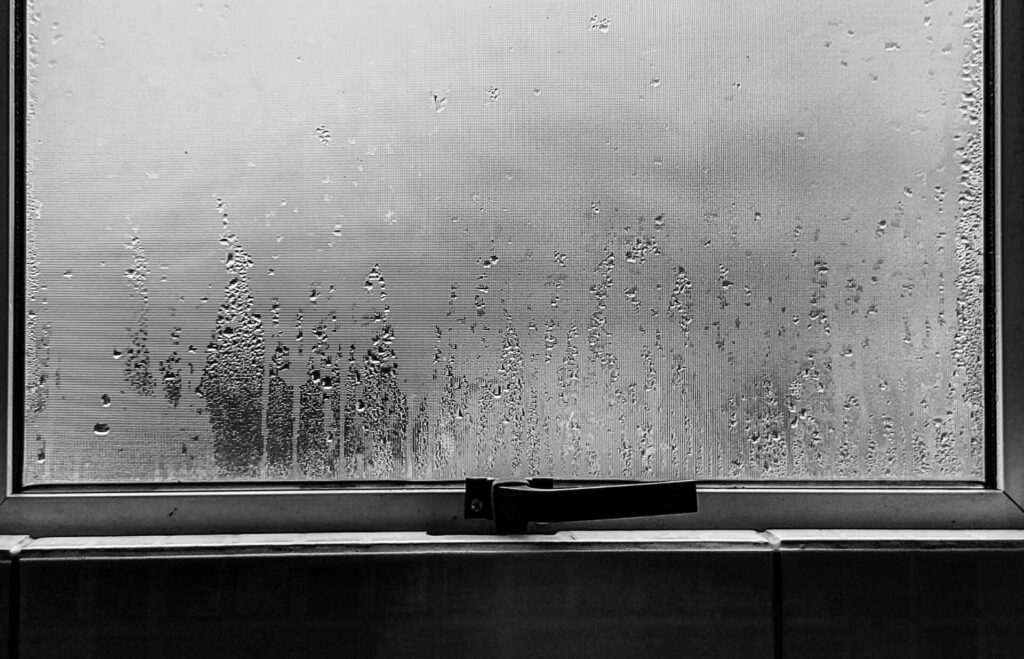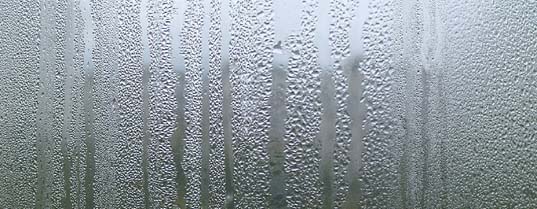Have you ever noticed condensation forming on the outside of your windows? While this phenomenon may seem strange, it’s actually a common occurrence with a simple scientific explanation. Understanding the causes of condensation will help you find solutions to prevent it, improve your window’s energy efficiency, and maintain a comfortable indoor environment.
Understanding Condensation
Condensation is the process by which water vapor in the air transforms into liquid water. When warm, moisture-filled air encounters a cold surface, it can no longer hold all the moisture, causing the water vapor to condense into visible droplets.
In the case of windows, the warm air from inside your home meets the cold glass surface, leading to condensation on the outside. The temperature difference between the inside and outside air, along with the relative humidity inside, plays a crucial role in determining the extent of condensation.

Image: www.cloudy2clearwindows.co.uk
Factors Affecting Condensation
1. Indoor Humidity
The higher the relative humidity within your home, the more moisture is available in the air. This increases the chances of condensation forming on the outside of your windows.
2. Temperature Difference
A significant temperature difference between the inside and outside of your home creates a larger temperature gradient. Greater the difference, the more likely condensation will occur.
3. Surface Temperature
The surface temperature of the window will affect condensation. Insulated windows with double or triple glazing may have a warmer surface temperature, reducing the risk of condensation.
Consequences of Condensation
While condensation on the outside of windows may seem harmless, disregarding it can lead to several issues:
1. Reduced Window Clarity
Excessive condensation can obstruct your view through the windows, affecting your comfort and safety.
2. Energy Loss
Condensation indicates inefficient windows, leading to heat loss and increased energy bills.
3. Mold Growth
Condensation can create ideal conditions for mold growth on window frames, walls. Mold can cause respiratory problems, allergies, and damage to the property.
Solutions for Condensation
1. Reduce Indoor Humidity
Controlling indoor humidity levels is crucial for preventing condensation on windows. Use a dehumidifier to remove excess moisture, especially during humid seasons.
2. Increase Ventilation
Allow fresh air to circulate by opening windows and doors periodically. Proper ventilation helps regulate humidity and temperature.
3. Upgrade Windows
Installing double or triple glazed windows with insulated glass and frames will increase their surface temperature, reducing condensation.
4. Window Films
Apply window films that create an insulating layer on your windows. These films act as a barrier against temperature and moisture transfer.
5. Window Coverings
Close curtains or blinds during extreme temperature differences to keep room warmer and reduce condensation.

Image: www.alamoexteriors.com
Condensation On Outside Of Windows
Long-Term Maintenance
1. Inspect Regularly
Check windows periodically for condensation. If you notice recurring condensation, take steps to correct the underlying cause.
>
2. Clean and Maintain
Keep windows clean and free of dirt or debris that can retain moisture. Regularly inspect and clean window frames, tracks, and seals to ensure proper function.
3. Energy Audit
Consider a home energy audit to assess the overall efficiency of your windows and identify any areas for improvement.
Conclusion
Condensation on the outside of windows not only affects your comfort but also affects your energy bills and the longevity of your windows. By understanding the causes and consequences of condensation, you can effectively manage and prevent it. Implementing solutions such as humidity control, proper ventilation, and window upgrades will ensure clear and condensation- free windows, contributing to a healthier and more energy-efficient home environment. Remember to practice regular maintenance and inspections to proactively address condensation issues and keep your windows functioning optimally.